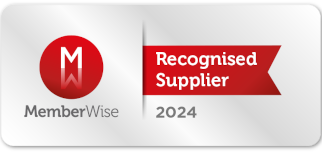
Using content to evaluate loyalty and customer retention
Cathy Wood,
-
DOWNLOAD
Your Content Marketing Checklist >

-
REQUEST TODAY
A Content Consultation >

With apps, social media and email just a tap away, the opportunities for loyalty schemes and customer retention programmes are virtually limitless. But with so many options, how can marketers ensure these initiatives genuinely drive loyalty and boost sales? What role does content play and how do you know if it’s working?
While retention programmes are often judged by hard metrics like repeat purchases, upselling, or customer lifetime value, there’s more at play. Content should be seen as a strategic asset within these programmes, not just a delivery mechanism but a differentiator that builds trust and encourages long-term engagement.
The way consumers respond to content within retention programme -through clicks, likes, shares, visits or more meaningful actions - should be a key part of how success is measured. Engagement in this way is a signal of relevance, resonance, and ultimately, loyalty.
The effectiveness of any loyalty or retention initiative depends on several factors: the nature of the business, the structure of the scheme, the profile of the customer and, of course, your objectives.
A strategic approach to customer loyalty
According to recent data, 72% of product users describe themselves as loyal to at least one company, proving that loyalty transcends simple habit. And while repeat purchases remain a strong signal, true loyalty today hinges more on long-term emotional connection and relationships rooted in consistent value.
Data analysts Demand Sage provides some interesting customer loyalty statistics for 2025:
- 72% of consumers are loyal to at least one company.
- 88% believe it takes three or more purchases to build brand loyalty.
- 64% of loyalty program members spend more to earn points.
- 84% are more likely to shop with brands that have loyalty programs.
- Loyalty programs can increase revenue by 12% to 18%.
- 70% consider loyalty programs a key factor in showing their loyalty.
- The customer loyalty management market is over $5.5 billion and is expected to exceed $24 billion by 2029.
For marketing leaders, loyalty schemes should be part of a bigger strategy to keep customers coming back. Whether it’s encouraging repeat purchases, ongoing subscriptions, or simply staying top of mind, the goal is the same: to build lasting relationships. When loyalty efforts are connected with smart tech tools, clear customer insights, and personalised communication, they can become a real engine for growth.
Customer retention techniques will vary wildly from a luxury brand to a supermarket, from B2C to B2B, but understanding those nuances and aligning them with brand purpose and customer expectations is critical for a sustained competitive advantage.
The most rudimentary way of evaluating any customer retention scheme is by asking, “Are people buying from me again?” However, more sophisticated programs go further by tracking metrics like customer lifetime value, advocacy and share of wallet to assess true loyalty impact.
The right tools for the job
Big-name platforms like Shopify, Salesforce, Microsoft Dynamics and Magento help marketing teams make smarter use of customer data. These tools make it easier to understand and act on customer behaviour, especially using something called the RFM model (Recency, Frequency, Monetary), which segments customers based on how recently, frequently, and monetarily they buy.
From transactional incentives like ‘10% off your next purchase’ to multi-tiered loyalty ecosystems, retention strategies should be aligned to your brand’s commercial goals, customer behaviours and data maturity. Common KPIs include repurchase ratio, upsell ratio, customer lifetime value (CLV) and customer loyalty index.
Content also plays an important role as a dynamic driver of loyalty and advocacy. Wherever possible, hyper-personalised content should be delivered across owned, earned and paid channels to enhance relevance and build stronger emotional connections. Email marketing plays a key role here, especially when it’s integrated with systems like a CRM (Customer Relationship Management) platform or a CDP (Customer Data Platform). These tools help tailor messages based on a customer’s stage in the journey, not just according to a fixed campaign schedule.
For brands within the luxury sector, including automotive, hospitality or travel, loyalty is less about discounts and more about experience, status and exclusivity. In these sectors, CRM systems enable the delivery of curated journeys - think concierge-level service, exclusive access, or bespoke rewards that reflect a deep understanding of individual preferences and brand affinity. Here, loyalty schemes must be designed not just to drive repeat behaviour, but to reinforce brand prestige and customer intimacy.
However you evaluate success, you must ensure communications align directly to measurable commercial outcomes. This means more than just looking at sales uplift, but also evaluating return on content investment, retention rates and brand sentiment, too.
Content can also play a significant role beyond the simplistic in bringing the brand to life and here’s where the picture can become more complex, as the value of branded storytelling, emotional connection and long-term equity also come into play.
What type of loyalty programme do you need?
A customer retention or loyalty initiative should be built around five critical questions:
- Does the programme genuinely solve a customer need or is it just serving a marketing goal?
- Is the experience intuitive, enjoyable and rewarding enough to keep people coming back?
- Is it enhancing the overall brand journey, or interrupting it?
- Is it aligned with how customers perceive the brand, across every channel and touchpoint?
- Are the incentives compelling, meaningful and reflective of the customer’s values, or is it just discounts?
Success can’t be measured solely on uptake or repeat sales, but instead, by what your content provokes in your customers, be that emotion, action or advocacy. While surveys and polls still provide value, modern loyalty analysis requires tracking to see how customers respond to and interact with both your user generated and brand content.
Google and social analytics offer key behavioural indicators including reach, engagement and dwell time, but insight also comes from mapping these interactions back to specific pieces of content and understanding their influence across the loyalty lifecycle.
Social listening tools can expand this picture too, potentially giving brands visibility into how loyalty efforts are discussed beyond their owned platforms. When customers are sharing your content organically, discussing it, or creating their own in response, it’s a strong signal of deeper loyalty.
Another way of looking at loyalty was conceived by Maritz Motivation Solutions when they conducted research into customer retention. They asked 2000+ customers from millennials to baby boomers in the US about their brand loyalty.
The insights resulted in the 4D loyalty framework, which indicates the following types of loyalty brands may experience:
- Inertia loyalty – customers stay because switching is harder than staying.
- Mercenary loyalty – they return for monetary gain, not emotional connection.
- Cult loyalty – the brand is part of their identity or values.
- True loyalty – they stay because they love the experience and what the brand stands for.
Every brand aspires to build true loyalty and that goal is increasingly content-driven. At Dialogue, our focus is helping brands craft and measure the kinds of content that not only convert, but signal genuine emotional connection and long-term brand affinity. Read more on our work with brand communities and creating content that really resonates with its audience.
By analysing content performance alongside customer behaviours, you get a clearer picture of where your brand sits in the framework and what resonates the most with your audience.
Analysing loyalty and content
As mentioned, to understand the strength of customer loyalty, go beyond transactions and look at advocacy and emotional alignment with your brand. Metrics like Net Promoter Score (NPS) (where users are scored between 0 and 10; promoters 9 – 10; passives 7 – 8; detractors 6 or less) remain valuable indicators of sentiment and referral potential. In parallel, customer engagement scoring models help track how actively and meaningfully individuals are interacting with your brand across touchpoints.
But for content-led loyalty strategies, performance analysis must drill deeper into how content is experienced, shared and acted upon. Understanding how your audience consumes and responds to brand content is essential to identifying where a genuine connection is being made or lost.
The performance of content across core customer retention channels like email, social and even gated experiences should be tracked as a strategic indicator.
Benchmarking performance against your own historical data is key, but also include agreed KPIs and sector benchmarks for full insight on how your content is performing, including driving engagement, creating customer satisfaction and, of course, loyalty. This analysis will let you know what’s working and where you should invest your resources for maximum impact.
The changing user journey and customer retention
The way customers move through the buying journey and how they form loyalty has shifted dramatically in recent years. The journey is no longer linear or funnel shaped. Instead, it’s multi-directional, always-on and influenced by digital content, peer input and brand experiences across touchpoints.
The traditional McKinsey Consumer Decision Journey proposed that a customer’s experience with one brand could influence their perceptions of every other brand in the same category. That principle still holds, but it now plays out across a wider ecosystem of signals, stories and shared experiences.
More subtle indicators of success like brand recall, advocacy and organic search behaviour post-purchase are now critical in evaluating loyalty. For example, a buyer returning online to watch content or search for brand terms after purchase may indicate deeper engagement than a repeat transaction alone.
So how do we measure these signals of loyalty and content’s contribution to them? By combining behavioural analytics with content performance metrics and tracking how customers move with and because of your content across channels. The content journey is the customer journey and understanding its impact is key to influencing retention, advocacy and long-term brand affinity.
Recognition, engagement, satisfaction, loyalty and advocacy
To make sense of content’s role in retention and growth, we can turn to a tiered evaluation framework: how is what we’re creating and distributing driving recognition, engagement, satisfaction, loyalty and ultimately, advocacy?
This model helps us track movement from passive exposure to active participation, deeper emotional connection and word of mouth. This gives brands a structured way to analyse content performance across the loyalty lifecycle, not just what’s converting, but what’s really resonating with the audience and building a brand community.
When evaluating satisfaction we might ask:
- How happy are you with the brand communications? (including tone of voice, nature of content, platform the communications are delivered through).
- What types of content do you prefer (including guides, events coverage, types of features etc)?
- Does the content make you feel part of a community?
- What do you do with any printed magazine or materials after you’ve finished with them?
- What do you think of the balance between content and advertising / size of magazine etc?
- How have you responded to content provided, from the brand itself or any advertiser? This can include visiting the website, buying a product or service or attending an event.
Unfortunately, there isn’t a one-size-fits-all loyalty evaluation metric, so adapting existing models and creating your own benchmarks and KPIs is vital to give you both the holistic and detailed insights you need on what you’re trying to achieve.
The bottom line is that financial returns matter, but the supporting content your brand creates and what your audience shares in return, offers critical context for understanding the strength of the relationship. It’s the difference between a repeat purchase and a retained customer.
If you’re looking to elevate how your content is building loyalty and customer retention, contact Dialogue. We’ll help you design content strategies that drive engagement, satisfaction, loyalty and advocacy.
Resources
A customer’s experience with one brand could influence their perceptions of every other brand in the same category – McKinsey Consumer Decision Journey
Types of loyalty brands may experience – 4D Loyalty Model
Customer loyalty statistics – Demand Sage
Read more insightful articles
See more from the blogThe future of luxury hospitality – Part 4: Exclusivity in an age of access
The future of luxury hospitality – Part 3: Wellness and the quest for meaning
The future of luxury hospitality – Part 2: Purpose and sustainability
The future of luxury hospitality – Part 1: Personalisation and technology
Proud to be a winner of industry awards, recognised as content marketing experts in print and digital media.












